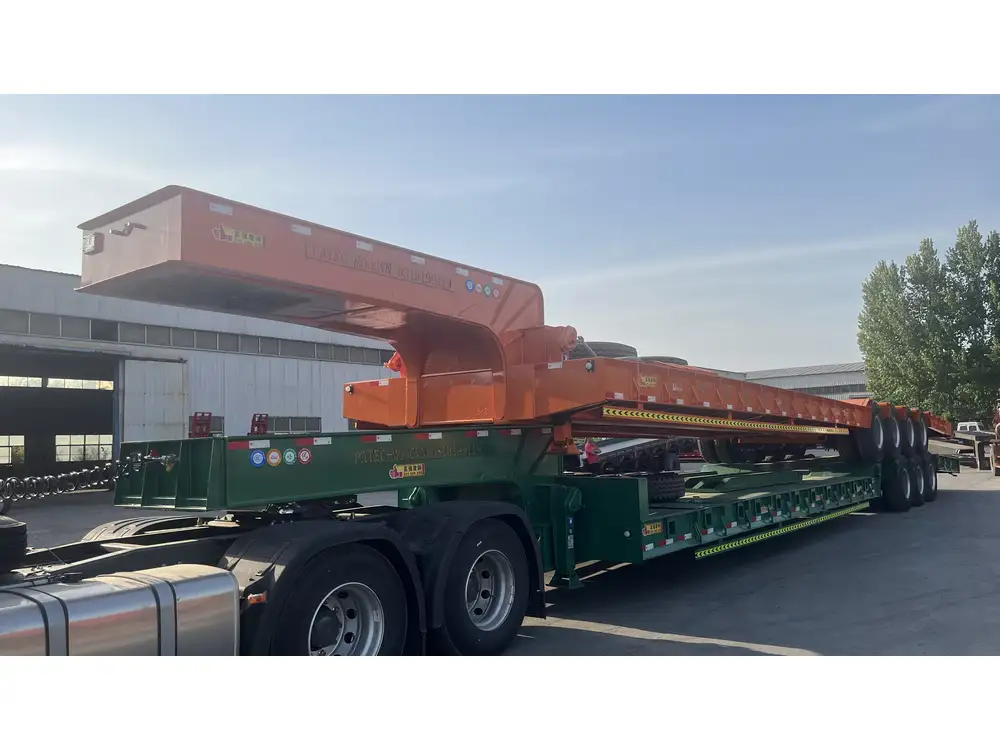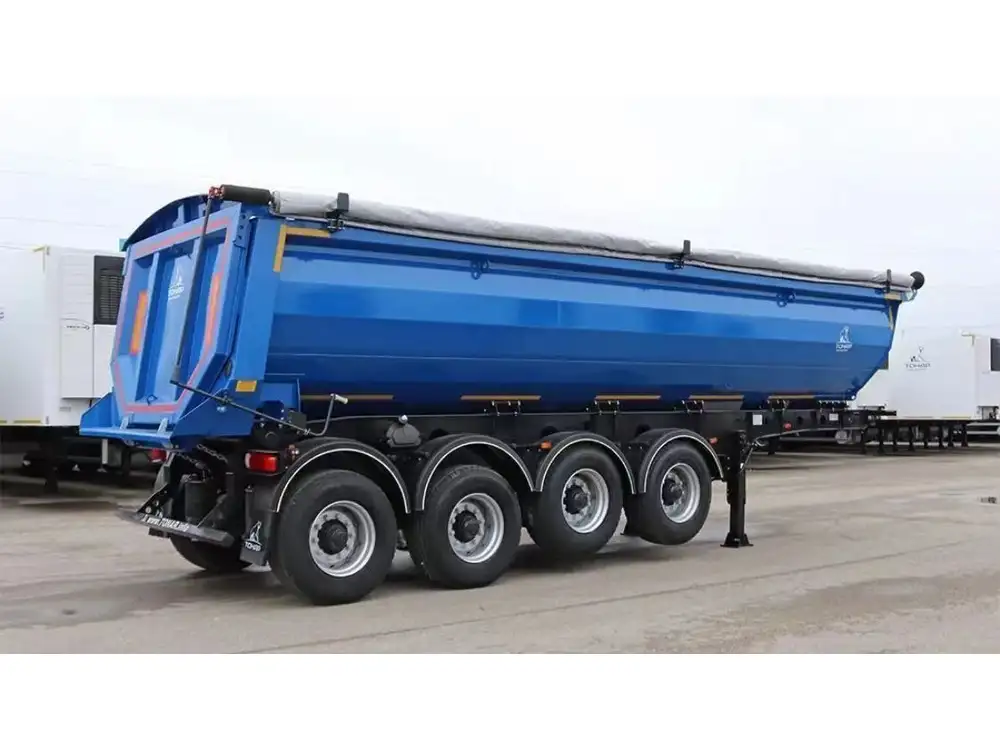When considering the capabilities of utility dump trailers, it is imperative to thoroughly understand how much weight they can effectively carry, particularly when it comes to hauling rock. This article will provide an in-depth analysis of utility dump trailers, focusing on their capacity to transport different types of rock and aggregate materials. We will explore several factors that influence load capacity, the types of rocks that can be transported, and practical advice for maximizing the utility of these trailers.
Understanding Utility Dump Trailers
What is a Utility Dump Trailer?
A utility dump trailer is designed to carry heavy loads and facilitate efficient unloading through hydraulic lift systems. Typically, these trailers are constructed with a steel frame and have a dump mechanism at the rear, making them ideal for transporting loose materials such as gravel, sand, and, most importantly, rock.

Dimensions and Weight Capacities
The carrying capacity of a utility dump trailer can vary based on its size and construction, ranging from small trailers capable of hauling a few thousand pounds to larger models designed for commercial use, with capacities soaring above 14,000 pounds. Below is a comparison table that outlines the dimensions and weight capacities of several common utility dump trailers:
| Trailer Length (ft) | Trailer Width (ft) | Load Capacity (lbs) | Common Uses |
|---|---|---|---|
| 5 | 6 | 3,000 | Lawn care, small landscaping projects |
| 12 | 6 | 6,000 | Medium-sized landscaping jobs |
| 14 | 7 | 10,000 | Construction jobs, bulk material transport |
| 16 | 8 | 14,000 | Heavy-duty construction, large-scale excavation |
Factors Affecting Load Capacity
When contemplating how much rock a utility dump trailer can haul, several key factors come into play:
1. Axle Configuration and Suspension
The number of axles and the quality of the suspension greatly influence a trailer’s load capacity. A dual-axle trailer can typically handle more weight than a single-axle model due to more evenly distributed weight and stability during transport. Additionally, trailers equipped with heavy-duty suspensions can absorb shocks and bumps more effectively, allowing for safer transports of heavier loads.

2. Material of the Trailer
The construction materials used in the trailer play an essential role in determining its weight capacity. Steel frames, while heavier, offer superior strength and load-bearing capabilities compared to lighter aluminum trailers. For the specific task of hauling rock, steel trailers are the go-to choice.
3. Load Distribution
Proper weight distribution within the trailer is crucial. When hauling rocks, maintaining an even load will prevent swaying while driving and reduce the risk of damage to the trailer and vehicles. A well-distributed load allows for better handling and stability.
4. Weight of the Rock
The type of rock being transported also affects how much can be loaded into the trailer. Different types of rock have different densities. For example, gravel weighs approximately 1,400 to 1,700 pounds per cubic yard, whereas larger stones or aggregate can weigh significantly more. Understanding these differences can assist in making informed decisions about load capacity.

Types of Rock Suitable for Hauling
When it comes to hauling rock, there are a variety of materials one might choose from, each serving different purposes:
1. Gravel
Gravel is the most common material transported using utility dump trailers. Its relatively low weight allows for substantial quantities to be hauled without exceeding load limits.
2. River Rocks
These are often used in landscaping and can vary significantly in size and weight. Typically, river rocks weigh between 1,200 to 1,500 pounds per cubic yard.

3. Crushed Stone
Ideal for construction projects, crushed stone can range from 1,400 to 1,600 pounds per cubic yard. With its dense packing, more of this material can be carried per trip, maximizing the utility of the dump trailer.
4. Slate or Large Boulders
Hauling larger stones or boulders requires taking into account the substantial weight they carry. Depending on the boulder size, loads can quickly exceed the capacity of standard utility dump trailers and thus require specialized equipment.
Calculation of Load Capacity
To determine how much rock a utility dump trailer can effectively haul, you can use the following formula:

Load Capacity Calculation:
Identify Maximum Weight Rating (GWR): This will often be indicated in the trailer manual or on a placard on the trailer itself.
Subtract the Weight of the Trailer:
- Example: If the GWR is 10,000 pounds and the trailer weighs 3,000 pounds, you have a net capacity of:
- 10,000 lbs (GWR) – 3,000 lbs (trailer) = 7,000 lbs capacity.
Consider the Density of Rock: Using average densities:
- Gravel (1,500 lbs/cubic yard): [ \frac{7,000 \text{ lbs}}{1,500 \text{ lbs/cubic yard}} \approx 4.67 \text{ cubic yards} ]
- Thus, approximately 4.67 cubic yards of gravel can be hauled in a trailer with a net capacity of 7,000 lbs.
Practical Tips for Hauling Rock with Utility Dump Trailers
Perform Regular Inspections: Ensure that the trailer’s tires, suspension, and the hydraulic system are in optimal condition before each load.
Weigh Loads: If transporting large quantities frequently, consider investing in a portable scale to accurately measure load weight, ensuring compliance with road weight regulations.
Secure Your Load: Utilize tarps or nets when traveling over long distances or on bumpy terrain to prevent loss of materials.
Distribute Weight Evenly: When loading rocks, use a shovel or rake to evenly distribute materials to maintain trailer balance.
Mind the Legal Limits: Always be aware of the local road weight restrictions and ensure your total loaded weight adheres to these regulations to avoid fines or accidents.
Conclusion
Understanding how much rock a utility dump trailer can haul is essential for anyone in the business of transporting loose materials efficiently and safely. By taking into consideration the nuances of trailer construction, load distribution, and rock density, one can maximize the payload while ensuring safe transportation.
Investing in a high-quality utility dump trailer tailored to specific needs enhances operational efficiencies, be it for landscaping, construction, or similar tasks. Remember, the key to effective hauling lies not just in the capacity of the trailer but also in how well load is managed and secured during transit. Whether dealing with gravel for a driveway, crushed stone for a construction site, or decorative river rocks for landscaping, a utility dump trailer is an indispensable asset for a multitude of transport needs.



